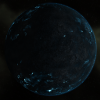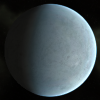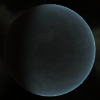This page explores the additional concerns or considerations for conducting Planetary Industry (PI) in Null Security (Nullsec) space. Guidance presented here is generally valid for other areas of dangerous space, such as High Security (Highsec) space in [Planetary Industry During War (Uni only!)|wartime]] or Wormholes, though profitability and tactics will vary by region of space.
PI in Dangerous Space
PI encompasses the two activities of extracting planetary resources and processing these raw resources into more advanced products. The amount of resources available for extraction on a planet is influenced by two factors:
- The parent system's Security Level. Lower system security correlates with greater amounts of resources.
- Competing resource extraction on the same planet. More players extracting resources from a given planet correlates with lower amounts of resources.
Comparison with Highsec
The two factors above might lead to the conclusion that PI is not worth the time or effort, in particular if we focus on conducting PI in Highsec space. In Highsec, PI profitability is already diminished by the higher security level, even more so in crowded regions of space.
Null Security (Nullsec) space is also likely to have competing resource extraction activity, but a lower security level means greater resource abundance and higher extraction yields overall. If only examining these two factors, then the logical conclusion is that Nullsec is more profitable.
Moreover, the majority of Customs Offices in Nullsec are owned by player corporations, which typically means much lower tax rates when moving resources or products to or from a planet. In Highsec, there is an unavoidable 5-10% tax on top of the rate set by the owning corporation, depending on the Customs Code Expertise skill. This skill does not affect Player-Owned Customs Office (POCO) rates in Nullsec.
Tradeoffs
However, Nullsec PI is not without compromises or hidden costs:
- Nullsec is dangerous. Bubbles, stronger rats, and gatecamps are plentiful. CONCORD is not present to intervene in conflicts. Any neutral capsuleer is a potential aggressor, and many roaming gangs have a habit of returning during peak PvE times. Survival in nullsec is an evolving challenge.
- Most high-volume trade hubs are found outside of Nullsec. If the goal is to sell PI products on the market, then the goods need to first reach the intended market.
- Certain areas of Nullsec do not have permanent NPC stations. Ships or materials staged in a player-anchored structure are vulnerable to the structure being attacked.
- Because of higher resource extraction yields, PI setups in Nullsec have a higher time cost for transportation if the configuration results in storage filling up quickly.
None of these tradeoffs is insurmountable, as explored in a later section. Even a casual approach to PI in Nullsec is sufficient to fund or supplement day-to-day activities.
Prerequisites for Nullsec PI
Homework
Capsuleers considering a new PI operation in Nullsec should take time to understand the region and requirements for initiating and maintaining the operation. A few basic questions might include:
- Which commodities will be extracted or produced?
- Which system(s) are viable for producing these materials? For a general reference, see Good Planets; for the NSC specifically, see the relevant section below.
- Which Command Centers are required, given selected planet(s)? These are sometimes available near the intended destination. Account for extras to cover changing plans or adding additional characters to a larger operation.
- Are materials destined for open market, other industrial activity, a buyback program, or something else?
- What about recurring threats in the region of interest? For the NSC, this would be the entire Y4Y7-Q constellation in Syndicate.
- How much time is reasonable or comfortable for managing an operation? This could be as often as daily, or less than weekly. Convenient and lower-effort setups are popular, such as a complete R0-to-P2 setup on a single planet.
While exact answers to these questions are not mandatory before organizing PI, a reasonable understanding of the steps ahead when planning an operation is helpful for managing PI successfully in a challenging Nullsec environment.
Skills
While there are minimal recommended skills in Planet Management and ship utility for PI in Nullsec, capsuleers will find greater success, increased margin of error, and higher survival rates by further advancing core navigation and defensive skills.
The recommended PI skills below will allow a single character to run operations on five planets, with the advanced PI skills permitting a sixth planet and advanced (P4) production. The recommended ship skills will enable piloting the standard E-UNI WH/NullSec Epithal fit, and the advanced ship skills will increase both the survivability of the Epithal and the amount of PI materials that it can carry.
| ~ 12 days and 22 hours | ~ 6 days and 1 hour | ~ 40 days and 8 hours | ~ 9 days and 14 hours |
|
Remote Sensing III |
Cloaking III |
Command Center Upgrade V |
Acceleration Control III |
Ships
The Epithal
Capsuleers new to PI in Nullsec should seriously consider only a single ship, the Epithal. This is a specialist Gallente Industrial Ship, similar to the Miasmos, with unique cargo bays for both Planetary Commodities and Command Centers. As there are separate bays for PI concerns, the Epithal can be fitted for maximum survivability at no expense to the ship's utility.
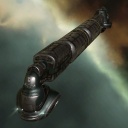 |
|
Improved Cloaking Device II
Interdiction Nullifier I
Multispectrum Shield Hardener II
EM Shield Hardener II
Medium Shield Extender II
50MN Y-T8 Compact Microwarpdrive
Warp Core Stabilizer II
Inertial Stabilizers II
Inertial Stabilizers II
Inertial Stabilizers II
Medium Ancillary Current Router I
Medium Hyperspatial Velocity Optimizer I
Medium Core Defense Field Extender I









Other Ships
Capsuleers should exercise discretion if considering any ship for PI aside from the Epithal in Nullsec.
- Other T1 Haulers. It is strongly recommended that capsuleers do not use other T1 haulers for regular PI activity. If there is a recurring need to haul extracted resources or final products to or from planets, then the character should be flying an Epithal.
- T2 Haulers. Again, capsuleers new to Nullsec or PI in Nullsec are urged to stick with the Epithal. However, at some discretion, a Deep Space Transport makes sense for moving large quantities of extremely valuable product between systems - though multiple smaller shipments in a Epithal might be preferred.
- Freighters. The safest way to move large quantities of goods out of Nullsec is in a Jump Freighter. This is not recommended for the average player, given the enormous skill, time, and investment required. EVE University's NSC often offers a shipping service, which members should seek to use.
- Any racial shuttle. Shuttles are passively immune to bubbles and have a rapid time-to-warp. As some PI activities (importing or exporting from POCOs, for example) involve being present in space and in the same system, a shuttle is a viable option for moving between systems with minimal risk.
Deciding What to Produce
- Main article: Planetary Commodities
Given the skills and means to start and manage a PI operation, the next key question is: Which goods should be produced? Fortunately, there is no wrong answer, though some choices are more reasonable than others. This decision is closely tied to which system(s) a player prefers for PI, as some planets (and thus some resources) will be unavailable in certain systems.

|
Coolant, Enriched Uranium, Mechanical Parts, Oxygen, and Robotics are all used to produce Oxygen Fuel Blocks. A requirement for reactions and fueling player structures, Fuel Blocks are regularly in-demand in local markets, negating the requirement to ship them to trade hubs. Members of the NSC should note there are respawning ice belts in AK-QBU for obtaining the remaining non-PI materials needed to produce Oxygen Fuel Blocks. |

|
Microfiber Shielding, Polyaramids, and Silicate Glass are P2 products that cannot be manufactured on a single planet because each requires P1 materials to be imported from a separate planet. Assuming the majority of players strive for minimal involvement with PI after initial setup, these three products are generally underproduced, and therefore yield higher profit margins for players willing to put in the extra effort. |

|
All P4 commodities are required for the production of Citadels and Engineering Complexes; therefore, these are generally in-demand and are likely to bring a reasonable return. Advanced commodities require the use of a P2-to-P4 or a P1+P2-to-P4 factory planet to manufacture, which requires more effort than the average capsuleer is willing to put into PI. |

|
To maximize PI profitability, comparisons should be made between the local and major trade hub markets to determine which goods are selling quickly, or which are selling with the highest profit margin. An item with high demand and lower supply is likely to meet both criteria. Players should account for time or effort for shipping goods to destination markets, which might involve contracting to a shipping service. The third-party site Adam4EVE is a useful tool to determine which PI commodities currently have the greatest profit margin. Players should note that there is some 'loss' of profit for each additional tier produced, though higher tier materials are much easier to ship and sell. |
| To maximize PI convenience, NSC members might avail of the NSC Buyback program as the final 'destination' for goods produced, which can be the simplest way to offload large quantities of PI materials. At time of writing, this program only accepts P2 products or higher. |
Useful resources for exploring PI schematics or product values may be found via references under the main Planetary Industry wiki.
Deciding Where to Produce
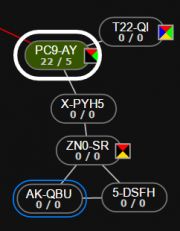
- Main article: Good Planets
Generally speaking, jumping through a stargate is one of the most dangerous activities in Nullsec. Capsuleers should include the increased risk of losing an Epithal or full cargo of PI goods when judging where to begin an operation. Limiting all PI production, or at least the most critical production, to a single system is a safer option than a more complex setup which requires crossing systems. The 'home' system for PI should also have a NPC-owned station or a friendly Citadel.
The tables below show all planets within the NSC back pocket and which PI commodities can be produced completely within each system. While 'safer' in the back pocket due to increased warning of threats entering PC9-AY, threats can (and do) surprise NSC locals by logging off in space or by appearing through a wormhole. Always pay attention and react appropriately to local intel.
T22-QI
Note, as of 2021-05-31, this system's POCOs have between 1.5% and 3.5% tax rate.
- T22-QI IV - Moon 8 - Trust Partners Warehouse
- T22-QI V - Moon 14 - Intaki Syndicate Academy
- T22-QI VI - Moon 6 - Intaki Syndicate Academy
- T22-QI VI - Moon 9 - Intaki Space Police Testing Facility (NSC Industry hub)
- T22-QI VI - Moon 12 - Intaki Syndicate Academy
- T22-QI VI - Moon 13 - Trust Partners Warehouse
X-PYH5
Note, as of 2021-05-18, this system's POCOs have a 1.5% tax rate.
| X-PYH5 - Planets | |||||
|---|---|---|---|---|---|

|

|
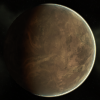
|

|

|

|
|
X-PYH5 I |
X-PYH5 II |
X-PYH5 III |
X-PYH5 IV |
X-PYH5 V |
X-PYH5 VI |
ZN0-SR
Note, as of 2019-05-31, this system's POCOs have a 5% tax rate.
- ZN0-SR III - Intaki Bank Depository
- ZN0-SR V - Moon 7 - Intanki Bank Depository
- ZN0-SR VI - Moon 4 - Intaki Space Police Assembly Plant
5-DSFH
Note, as of 2019-03-19, this system's POCOs have a 0% tax rate.
AK-QBU
Note, as of 2019-05-31, this system's POCOs have a 5% tax rate.
Additional NSC Reference
- Screenshots of PI resource bars for every planet in NSC constellation
- Percentage abundance of R0 for every planet in NSC constellation
Maintaining a PI Operation in Nullsec
There are additional considerations and guidelines capsuleers should heed when conducting PI in dangerous space.
General Tips
These points are presented in addition to those for general Nullsec survival skills.
- Join, monitor, and contribute to local intel channels. NSC-specific intel information is available in the EVE University Forum in a consolidated post.
- Join the local standing fleet to make it easier to coordinate with other capsuleers against threats.
- Use D-scan. Though local chat displays other players in Nullsec, this is still good practice, and it might give some intel on the types of ships entering a system.
- If a particular activity requires a capsuleer to be in space, then it can probably be conducted while tethered at a friendly Citadel. If a friendly Citadel is unavailable for tethering, then the next safest option is to be cloaked in space.
- Capsuleers should have access to sufficient funds for covering export or import taxes between POCOs and the planetary colony.
- Expect that planned windows for PI activity will often be thwarted by local threats. Plan ahead for this by exporting materials early to free space in on-planet storage, building additional storage if possible, or opting for simpler setups that require less time in space. Do not try to squeeze in a POCO run if a roaming gang is afoot.
- POCOs at any planet can be used to store PI materials, in case it is inconvenient to return to a system with a safe Citadel or station.
On Alts
Alternate characters (alts) are not a requirement for PI. However, many capsuleers opt to train alts for supporting larger or more complex PI operations.
- If conducting PI on an alt character then endeavor for the alt to have positive standings to locals. For NSC members, this means applying for the alt to be on the NSC Pocket-Blues list or a member of the Ivy League Alt Alliance.
- If running an operation with multiple alts, stagger each alt's activity to avoid multiple characters sitting idle. For example, one character can collect from a POCO while another is in warp, which is preferred to one idling at a POCO for a few moments.
- Try to bring alts into the local standing fleet before undocking or warping between systems.
- At best, failure to have positive standings with locals or not joining standing fleet results in spooking friendly capsuleers who may not recognize the alt character. At worst, locals will hunt the alt character down.
- If a PI operation requires crossing between systems, then consider using one or more alts (if multiboxing) to monitor for new threats in either the source or destination system, whichever is likely to be more dangerous.
Keeping an Epithal Alive
The most dangerous activity in PI is moving an Epithal to or from a POCO.
- POCOs require a capsuleer to be within 2500 meters only while attempting to exchange material between a ship's cargo and POCO storage. This should be the only recurring reason to undock in an Epithal.
- Before venturing to POCOs to pick up a week's worth of advanced product, confirm via intel channels whether or not there has been any recent activity in the area.
- There is a delay of several seconds for successive transfers between a POCO and storage on the planet surface. If there are multiple launchpads to retrieve material from then try to first consolidate material into fewer exports with expedited transfers.
- Materials can be launched to a POCO while mid-warp, in case this is left until the last second. Try not to linger at a POCO for longer than necessary.
- Splitting stacks of input materials can make complex imports quicker and easier, particularly if running a more advanced factory setup.
- Warping to bookmarks on POCOs, rather than POCOs themselves, is faster and easier than navigating the system menu to select a destination. An ideal POCO bookmark could permit an Epithal to start aligning to its warp-out destination while conducting the transfer with the POCO.
- Epithals are not small and need time to align for warp-out. It is possible to collide with the POCO and bump the Epithal away from its alignment path, thus increasing time to warp. The risk of this increases if warping between multiple POCOs during the same outing, or if warping directly to a POCO.
Losing an Epithal
This will eventually happen. Do not panic!
- Shield hardeners are not passive modules. Turn them on, and overload them if under fire. An Epithal cannot survive for long, but the extra time permits additional threat assessment and potential assistance.
- Call out the threat in intel channels. Drag character names, ship types, and the threat location into the appropriate in-game chat.
- After the Epithal is lost, and after your pod is safe (if possible), link the killmails in intel channels to provide threat intel to other players and support the correct response to a threat.
- Try not to also lose the pod, as the character's continued presence in the system might be the only remaining source of intel on the threat.

